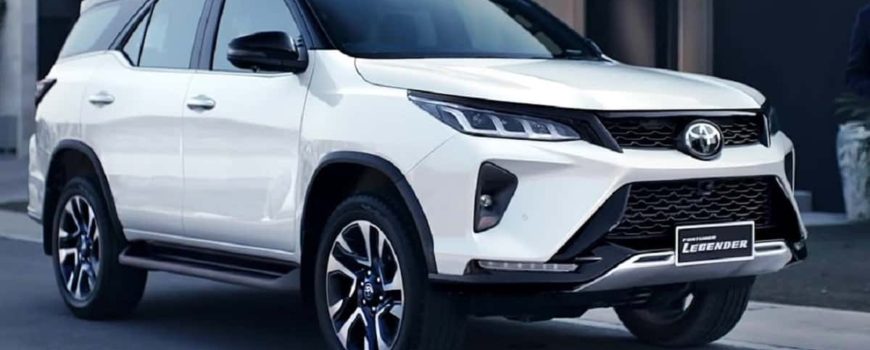Your cart is currently empty!
How to maintain your new car?
zarouniauto

One of the qualities of modern cars is that they don’t need frequent service to keep them driving smoothly. Changing the spark plugs, breaker points, and condenser used to be an occasional exercise. Body rust was seen as a normal process that came as the car aged. But now many spark plugs can last 100,000 miles before needing to be replaced. The points and condenser have been replaced by electronic ignition. The chassis, suspensions, and even some gearbox are all lubricated indefinitely. Factory warranties for rust-through are often six years or longer. Furthermore, reliability has considerably increased. As a result, most late-model automobiles and trucks should be able to go 200,000 miles with proper maintenance.
Here are a few simple, routine tests and practices that will assist you in getting there.
Examine the Engine Oil
Do it on a regular basis—monthly for a car in good condition, and more frequently if you notice an oil leak or need to replenish oil on a regular basis. To acquire an accurate dipstick reading, the car should be positioned on level ground. Don’t overfill the container. If you do have a leak, find it as quickly as possible and rectify it.
Check Tire Air Pressure
Use an accurate tire-pressure gauge to check the inflation pressure in each tire, including the spare, once a month and before any long road journeys. When the tires are cold, do this (before the vehicle has been driven or after no more than a couple of miles of driving). Instead of using the maximum pressure imprinted on the tire’s sidewall, use the inflation pressure advised by the vehicle’s manufacturer. A placard on the front doorjamb, in the glove compartment, or in the owner’s handbook will normally list the suggested pressure. Inspect your tires for irregular or uneven wear, cuts, and any visible sidewall bulges.
Wash the Car
If possible, wash the car once a week. To remove dirt and road salt, wash the body and, if necessary, water down the fender wells and undercarriage. When water beads grow to the size of a quarter, it’s time to wax the finish.
Other Checks at Each Oil Change
Changing the engine oil and filter every 7,500 miles or six months, whichever comes first, is recommended by many automakers for normal driving. For the vast majority of motorists, this is sufficient. The change interval should be shortened to every 3,000 miles or three months for “severe” driving, such as frequent, very cold starts and short excursions, dusty conditions, or trailer towing. (For the particular intervals advised for your vehicle, consult your owner’s manual.) Diesel and turbocharged engines, for example, may require more regular oil changes.
Check the Air Filter
Remove the air-filter element and shine a bright light on it. if you don’t see light, replace it. In any case, stick to the recommended service intervals.
Check the Constant-Velocity-Joint Boots
Examine the bellows-like rubber boots, also known as CV boots, on the drive axles on front-wheel-drive and some four-wheel-drive vehicles. Replace any that are cut, cracked, or leaking right away. If dirt gets into the CV joint, it can rapidly become a costly repair.
Inspect the Exhaust System
Check any rusted-through exhaust pieces that need to be replaced if you’re ready to do some under-car inspections. Tighten any loose clamps as well. While the automobile is on the ramps, do this. If you have your oil changed at a shop, have them perform these inspections. While driving, listen for variations in the exhaust sound. Rather than repairing components of the exhaust system at separate periods, it’s usually best to replace the entire system at once.
Look at the Brakes
It makes sense for most people to get their brakes checked and serviced by a business. Remove all wheels and inspect the brake system if you do your own brake work. Replace worn pads or linings, and have rotors or drums that have been badly scored machined or replaced. Brakes should be examined at least twice a year, and more frequently if you drive a lot.
Check the Fluids
The automatic transmission is sealed in many contemporary autos. Check the transmission dipstick with the engine warmed up and running on automobiles where it is not sealed (see the owner’s manual for specifics). Examine the level in the brake-fluid reservoir and the power steering pump dipstick (it’s normally linked to the fluid reservoir cover). If your brake fluid is low, top it up and have the system inspected for leaks.
Clean the Radiator
Remove debris with a soft brush and wash the outside of the radiator with a detergent solution to prevent overheating.
Check the Battery
Inspect the terminals and cables on the battery to ensure they are firmly secured and free of corrosion. Check the fluid level of the battery every few months if it has detachable caps—especially in warmer climates. (For more information, see our car battery reviews and buying tips.)
Regular Maintenance For Every Two to Four Years
Drain and Flush the Cooling System
You might prefer to leave this to a store, given the trouble of collecting and carefully disposing of old antifreeze.
Change the Automatic-Transmission Fluid
Many models need you to replace the fluid and filter every 36,000 miles—and even sooner if the usual pink fluid becomes darker. The fluid and, if applicable, the filter in some autos can last 100,000 miles or more. The transmission fluid on other late models never needs to be changed. This information can be found in your owner’s manual.
Replace the Drive Belts and Hoses
Even if they don’t appear to be worn, do this every two to three years. Have a belt adjusted if it becomes noisy.
Change the Timing Belt
If your car has a belt rather than a chain, change it according to the manufacturer’s recommendations—usually every 60,000 to 80,000 miles. Consult the owner’s handbook or a dealer. Failure to replace the timing belt might lead to a costly engine repair if the belt breaks.
2 responses to “How to maintain your new car?”
I do agree with
all the ideas you’ve presented on
your post. They are really convincing and
will definitely work.
Still, the posts are very quick
for beginners. Could you please extend them a bit from subsequent
time?
Thanks for the post.- zarouniauto
Thanks for your valuable opinions, Kai Klauder.
We will keep in mind your suggestions while preparing our future posts.
We are always happy to hear our customers’ opinions and suggestions.
We hope you will continue to support us as we continue to grow!









Leave a Reply